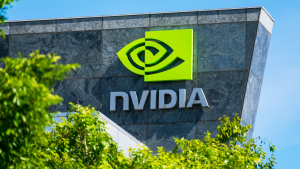The stock market has been unforgiving for investors looking for tech stocks to buy in 2022. Unfortunately, the turbulence will linger in early 2023 as recession fears remain entrenched until a meaningful U-turn in monetary policy. Tech stocks are cyclical in nature, and market movements will disproportionately affect them in both directions. This means the trough is always the best time to look for tech stocks to buy, and 2023 will be no different.
We may already be in a recession, but there is no telling whether or not the worst is behind or in front of us. However, there are some arguments for why it may not be all doom and gloom for the stock market. First, the stock market bottoms out six months before the economy does. If we look at 2008, the recession was officially declared a year after it began. By that time, the S&P500 was already >40% down, and it only went down another 14% before rallying.
Second, last year’s selloffs have turned many tech stocks into value stocks. A further downturn will not be as severe for these stocks already changing hands at a hefty discount. Instead, we may see many tech stocks surge in late 2023 or early 2024 once the Federal Reserve reverses its monetary policy. Thus, 2023 will likely deliver the best time to buy the following 25 tech stocks:
- Intel (NASDAQ:INTC)
- Cloudflare (NYSE:NET)
- Tyler Technologies (NYSE:TYL)
- ANSYS (NASDAQ:ANSS)
- Fiverr (NYSE:FVRR)
- PayPal (NASDAQ:PYPL)
- Texas Instruments (NASDAQ:TXN)
- Broadcom (NASDAQ:AVGO)
- Micron (NASDAQ:MU)
- Visa (NYSE:V)
- Mastercard (NYSE:MA)
- International Business Machines (NYSE:IBM)
- Amazon (NASDAQ:AMZN)
- Apple (NASDAQ:AAPL)
- Alphabet (NASDAQ:GOOG, GOOGL)
- Microsoft (NASDAQ:MSFT)
- Nvidia (NASDAQ:NVDA)
- Advanced Micro Devices (NASDAQ:AMD)
- Salesforce (NYSE:CRM)
- Adobe (NASDAQ:ADBE)
- Tesla (NASDAQ:TSLA)
- Netflix (NASDAQ:NFLX)
- Meta Platforms (NASDAQ:META)
- Spotify (NYSE:SPOT)
- Tencent Holdings (OTCMKTS:TCEHY)
Intel Corporation (INTC)

Intel (NASDAQ:INTC) is one of the largest semiconductor manufacturers in the world, and one of the top tech stocks to buy . Its products are used in various industries, including automotive, aerospace, industrial, and healthcare. The company is currently trading at a trailing price-earnings ratio of 8x after a selloff that began in April last year, now down 62%.
The current valuation of the company looks very compelling. Intel’s long-term growth is expected to come from its data center business. These fast-growing data centers are significant consumers of Intel’s processors and are expected to increase their spending on CPUs. As the cloud and data segment delivers robust growth, Intel is set to benefit from the increased demand in the long run. Its partnership with Mobileye is also making it benefit from the expansion of self-driving cars.
Furthermore, Intel’s stock is a good bet for investors looking for tech stocks to buy during the next market rebound, as the firm has been hit disproportionately hard by the selloffs. This is due to Intel having difficulties competing with its 2021 figures. However, as 2023 comes around, Intel will likely turn a corner and start growing once more investors realize the long-term value of this stock.
Cloudflare Inc (NET)

Cloudflare (NYSE:NET) provides Internet solutions geared towards privacy. The company sells two main products: CDN and DNS. CDN allows customers to host their websites on Cloudflare’s servers to protect themselves from DDoS attacks and save on bandwidth costs. On the other hand, Cloudflare’s DNS aims to safeguard user anonymity while providing a fast resolver to browse the internet.
Cloudflare is still going through an aggressive expansion phase by acquiring new clients, expanding its workforce, and increasing its global reach despite the market downturn. The company’s financials also have remarkable growth despite slowing down. Revenue growth is still hovering around 50%, while losses are narrowing, and sustaining such growth rates will compel investors to pay a significant premium for NET stock as the economy rebounds.
Moreover, the CDN market is expected to expand at a compound annual growth rate (CAGR) of 23.0% from 2022 to 2030. This is expected to drive Cloudflare’s revenue and profit as we advance.
Tyler Technologies (TYL)

Tyler Technologies (NYSE:TYL) is a leading enterprise infrastructure software and services provider. The company offers various products, including enterprise asset management, mapping and GIS, public safety, detention management, and court case management systems. The company is now growing its business by acquiring new firms and increasing its product offerings. It has a strong presence in North America and the Caribbean. The company is expected to benefit from the growing demand for infrastructure software in the coming years.
Investing in TYL stock is a great opportunity for investors looking to diversify their portfolios, being a global leader in providing software and technology solutions for the public sector while trading 41% down from its all-time high. Investors will resume paying a premium for the stock once the company continues its strong track record of financial performance and growth.
First and foremost, Tyler Technologies has an impressive revenue growth rate despite short-term hurdles. Over the past decade, Tyler Technologies has consistently grown its revenue over a double-digit clip. This demonstrates the company’s ability to expand and acquire new customers, as well as its ability to manage its existing customer base effectively.
Secondly, Tyler Technologies has a diverse portfolio of products and services, which provides investors with numerous options for diversifying their portfolios. The company currently offers solutions for public sector organizations in finance, human resources, and enterprise resource planning. Tyler Technologies’ solutions are also designed to easily integrate existing systems, allowing customers to reduce costs and increase efficiency.
ANSYS (ANSS)
ANSYS (NASDAQ:ANSS) is a tech company with robust financials. It develops and markets engineering simulation software and services to the automotive, electronics, semiconductors, aerospace and defense, energy, healthcare, and consumer products industries. In the last three years, the company’s revenue has increased at a growth rate of 12.9%, and I expect revenue will continue to increase at a double-digit clip in the long term.
Of course, ANSYS’ share price has had a rocky road over the past twelve months, with a 39% decline. However, a closer look at the company’s strong financials and impressive net margin suggest that the stock could be a good long-term buy. ANSYS’ net margin stands at 23.1%, ranked better than 93.31% of 2676 companies in the Software industry. That net margin is still growing while most companies are facing margin compression.
Investors also should watch for signs of increased revenue and profits, which could result in a boost in ANSYS’ share price. Its solid financials is enough to prompt a surge once investors start being more aggressive.
Fiverr (FVRR)

Fiverr (NYSE:FVRR) is a global online marketplace for entrepreneurs and freelancers. The company helps people do graphic and web design, writing and translation, video and voiceovers, coding, marketing, and other services at as low as $5. Fiverr is expanding its business and growing its user base by increasing its marketing activities. The company focuses on developing its user base, increasing revenue, and expanding its global reach. Fiverr is expected to benefit from the growing popularity of its services and the burgeoning freelance industry.
FVRR stock is among the worst hit from the tech selloff, which could disturb some investors. However, the company has top-class customer retention and lightning-quick sales growth. Fiverr is narrowing its losses and becoming gig workers’ go-to platform. Once the company fully recovers from its post-pandemic setback, I expect FVRR stock to surge.
PayPal (PYPL)

PayPal (NASDAQ:PYPL) is a leading online payment company. The company provides online payment and money transfer services to individuals and businesses. Much like Fiverr, PayPal’s stock is down significantly from its previous high. It is also down nearly 43% from its pre-pandemic stock price. However, PayPal is still a highly profitable business, and its top line continues to accelerate while profitability has picked up. The company is a widely used payment method that won’t go out of relevancy due to these short-term hurdles.
Overall, PayPal provides a great opportunity for investors to capitalize on its strong growth prospects. With a strong management team, a well-positioned digital payments market, and a growing buy now pay later (or BNPL) and cryptocurrency sector, PayPal is well-positioned to capitalize on the opportunities ahead. The current trough provides an excellent entry point for the stock.
Texas Instruments (TXN), Broadcom (AVGO), and Micron Technology (MU)

Cyclical stocks are prone to selloffs during market downturns. This is because demand for their products experiences a slowdown during recessions. Especially those in the semiconductor space are usually among the worst affected by recession fears. However, they rebound faster and offer a better entry point. Such stocks include Texas Instruments Incorporated (NASDAQ:TXN), Broadcomm Inc (NASDAQ:AVGO), and Micron Technology Inc (NASDAQ:MU).
The semiconductor business is the largest segment of these companies’ overall operations. While this sector has cooled down a lot, it still offers many opportunities going forward as it serves multiple end markets, including communications, industrial, automotive, computing, and the remarkably fast-growing cloud computing market. All of these areas have tremendous potential, and these stocks have fallen significantly in the past few months, making them excellent choices for tech stocks to buy.
Moreover, semiconductors are still in high demand, as evidenced by these companies’ robust sales growth. Another plus point is the CHIPS act aimed at boosting domestic semiconductor production. Thus, investors won’t mind paying a higher premium for these stocks once the economy inevitably starts turning its gears again.
Visa (V) and Mastercard (MA)

Investing in Visa (NYSE:V) and Mastercard (NYSE:MA) stocks can be smart for any investor looking to diversify their portfolio. Both companies are leaders in the financial industry and have a strong track record of growth and profitability. Many consider both of them to be tech stocks due to their accelerating digital payments system. Thus, if you are looking for safer tech stocks to buy, these two should be on the top of your list as they benefit from rate hikes and are significantly less risky than tech companies that depend on semiconductor sales or ad revenue.
Furthermore, both of these companies wield remarkable net margins. Visa’s is over 50%, and its revenue growth is near 19% in the latest quarter. Mastercard does have slightly weaker financials, but the effect on its stock price is negligible, and both move in correlation.
Investors can assess each company’s metrics, innovation, and dividend strength to decide which is the better fit for their particular investment goals. However, both companies offer nearly equal potential for investors and are viable investment options.
IBM (IBM)

Another safe tech stock to buy is IBM (NYSE:IBM). While Big Blue won’t make you a millionaire with outsized returns, it also won’t crash as severely during a recession. This old company has continued to retain many clients who’ll continue to buy services from IBM even during challenging economic conditions, forming an inelastic revenue segment.
Moreover, IBM focuses on higher-growth segments such as cloud computing, AI, and the blockchain. These segments have already become the key driver, with the hybrid cloud segment having revenue growth of 15%. In comparison, software and consulting grew at 7% and 5%, respectively. If the trend continues, this company can catch up with the rest of the market in the long run.
Amazon (AMZN)

Amazon (NASDAQ:AMZN) offers a wide variety of products and services, from books and clothing to groceries and music. It is the leading online retailer and a major player in cloud computing, offering a wide variety of services and tools.
Cloud computing is quickly becoming Amazon’s most significant growth driver. It is able to consistently generate strong free cash flow, allowing it to invest in growth initiatives and return capital to shareholders. Even cryptocurrency networks such as Ethereum (ETH-USD) and many governments extensively use Amazon’s servers.
Moreover, its primary segment, e-commerce, is facing short-term difficulties. But that’s expected, as many pandemic-driven customers haven’t returned. Once that segment readjusts to a more normal long-term growth trend, I see AMZN stock stabilizing and growing again. The stock is below pre-pandemic prices and is set to deliver strong returns in the long run.
Apple (AAPL)

Apple (NASDAQ:AAPL) has been a leader in innovation for decades, and its products are known for their quality and usability. The company’s reputation is simply unshakeable, and when you invest in Apple, you can benefit from its long-term success in the tech industry. The stock has consistently performed well over the years and has seen stellar returns except for the current short-term decline.
The company is constantly innovating and creating new products and services. New iPhones every year form a very inelastic revenue segment due to Apple’s closed-loop ecosystem and remarkable customer retention. Moreover, its products are a symbol of prosperity, especially in third-world countries where other luxury products aren’t as popular. This is a definite competitive advantage for Apple that almost no one has.
Its financials also reinforce the company’s strength. Both the top and bottom lines expanded by 8.14% and 0.83% in Q3. Furthermore, unlike most other tech companies, Apple relies very little on ad revenue or highly cyclical segments. The company is still hiring, albeit at a reduced pace, and hasn’t announced layoffs. That signals solid fundamentals in these conditions, which is why I think AAPL stock is perfect for investors looking for tech stocks to buy that balance potential upside and risk.
Alphabet (GOOG, GOOGL) and Microsoft (MSFT)

Alphabet (NASDAQ:GOOG, GOOGL) and Microsoft (NASDAQ:MSFT) are perfect if you’re looking for more established tech stocks to buy. Microsoft is a leading computer software company offering everything from computer operating systems to business software. It also owns several other tech companies, including LinkedIn, which will help boost its value in the long term. Thus, Microsoft is an excellent long-term tech stock for both beginners and experienced investors. The company’s products, such as Microsoft Office and Windows, are a must for white-collar businesses.
Alphabet also offers a wide variety of services, including search, cloud computing, and autonomous vehicles. Alphabet is one of the most innovative tech companies in the world, making it a great long-term investment. The company also owns Google and YouTube, guaranteeing that Alphabet remains relevant for years, if not decades, to come.
All in all, they are evergreen investments firing on all cylinders and expanding their top lines. They have both struggled in the short term due to the economic landscape causing ad revenues to shrink and margins to compress, but they won’t disappoint over the long run. Their relevancy will continue to make them grow alongside the economy and trade at a premium.
NVIDIA (NVDA) and Advanced Micro Devices (AMD)

Both NVIDIA (NASDAQ:NVDA) and Advanced Micro Devices (NASDAQ:AMD) are computer hardware companies specializing in graphics processing units (GPUs). GPUs are a critical component in computer gaming, making them solid long-term gaming investments. On top of their computer hardware, both NVIDIA and AMD also offer artificial intelligence (or AI) tools. AI is becoming increasingly important as more companies and services use it. Thus, NVDA and AMD are excellent long-term tech stocks to buy for both gamers and AI experts.
Of course, both are down substantially from their previous peaks due to them being very cyclical.
Last year, both companies saw profits surge due to a chip shortage. Cryptocurrency miners and scalpers contributed to this shortage by ordering large amounts of GPUs and using them for mining or selling them for more. However, The Ethereum network’s shift to a proof-of-stake consensus and Bitcoin (BTC-USD) ‘s fall in value contributed massively to GPU demand plummeting. This has caused an oversaturation of GPUs as miners and scalpers try to sell them, and it is now hurting both companies.
For 2023, AMD is the best of the two. The company offers a more diverse product portfolio of computer components. Thus, the current downturn is a great buy opportunity for AMD stock. I recommend NVIDIA if you are a risk-taker.
Salesforce (CRM)

Salesforce (NYSE:CRM) is a cloud computing company focused on customer relationship management (CRM). CRM is a popular business software that helps keep track of sales and marketing efforts. As the tech industry shifts towards cloud computing, CRM is becoming a more cloud-based system. Salesforce had a 57% decline from its peak, which seems oversold for a cloud computing stock.
Recent acquisitions and partnerships have made Salesforce an even more attractive option for investors. The company has acquired several smaller businesses that have helped it expand its reach and broaden its portfolio. Salesforce has partnered with companies such as Slack, Google, and Amazon to create a comprehensive platform that can integrate with other services. This has allowed Salesforce to create a robust platform that businesses of all sizes can use.
Adobe (ADBE)

Adobe (NASDAQ:ADBE) is a software company focused on graphic design, video editing, and marketing. It makes some of the most popular design software in the world, such as Photoshop and Illustrator. Thus, its popularity makes it among the best tech stocks to buy if you are looking for an established company with long-term relevancy.
Additionally, Adobe has strong and consistent financial performance, room to grow, and operating efficiencies and share repurchases that should help to improve its financials even further. In Q4 2022, Adobe reported a double-digit increase in revenue and a 0.27% increase in operating income, while its net income decreased by 4.6%. Moreover, the company is more reliant on selling software subscriptions, a growing segment.
Not only that, subscriptions provide cash continuously for software that needs very little server-side upkeep. The company also has a cloud segment which could become a significant growth driver in the long run.
Tesla (TSLA)

While Tesla (NASDAQ:TSLA) might look like a falling knife to many after its 70% decline from its peak, it is reaching highly oversold territories. The stock might look traditionally overvalued due to its high PE, but investors should remember that its profits are doubling yearly. Its top-line growth is also consistent, near 50% growth. That should justify a much higher premium than its current value.
Simply put, Tesla’s financials should not warrant a selloff of this scale lasting too long. It is also by far the most established electric vehicle company in the world. Thus, I highly recommend the stock for 2023 as it offers a once-in-a-generation buying opportunity. Once the global economy picks up again, Tesla could surge much higher.
Netflix (NFLX)

Netflix (NASDAQ:NFLX) has recovered substantially from its selloff, but it still has a long way to go. The company has not only retained its pandemic subscribers but is now growing again, including a 6% top-line growth. That is impressive, considering not many people are binge-watching Netflix after 2020, and competition is getting tougher for streaming companies.
In addition, Netflix is taking smart steps to narrow its losses by introducing ads, cutting headcount, and cracking down on account sharing. That might not be the best experience for some customers, but it is great news for investors as it opens up more revenue sources for the company. Beating expectations by a healthy margin is another major plus.
Therefore, despite the strong recovery, the stock still provides an excellent long-term buying opportunity. Its stock price is still 20% below pre-pandemic prices, while its profits have more than doubled since.
Meta Platforms (META)

Meta Platforms (NASDAQ:META) is on the receiving end of a much harsher punishment than Netflix. That is because Netflix has taken smart steps to improve its profits, but Meta has done little. The biggest concern for investors with this company is its metaverse project. It is not easy to find anyone interested in such a project.
Likewise, its metaverse segment is a money pit with little revenue generation. In the first three months of 2022, sales from the Reality Labs segment were only $285 million. That’s $3.67 billion in operating losses.
Of course, that’s not a healthy segment, but it also shouldn’t warrant a 68% selloff. Meta owns Facebook, WhatsApp, Instagram, and Messenger. Those four apps generated $9.3 billion in the first nine months of 2022, which puts total operating income at $5.66 billion. That deserves a much higher valuation in the long run.
Spotify (SPOT)

Spotify (NYSE:SPOT) has seen a turbulent ride since its IPO in 2018. Despite missing analysts’ expectations for ad revenue and subscribers in its most recent earnings report, Spotify has posted some positive numbers. In Q3 2022, the company’s revenue growth was 21.4%, and the company is in a very favorable position to execute numerous catalysts that could drive long-term upside. One is the Euro regaining its strength.
Spotify’s paid listeners are roughly two times more profitable than free listeners, and if the company can grow its paid subscriber base, it could bring significant long-term upside. Additionally, the company has much more room to grow in developing countries where it is still not popular.
If the company can execute its catalysts, then it could see a significant long-term upside. With the right management and strategic decisions, SPOT stock could become a lucrative long-term investment. Especially once ad revenues recover, Spotify can turn a corner and surge.
Tencent Holdings (TCEHY)

Tencent Holdings (OTCMKTS:TCEHY) is one of the leading tech companies in China and is often overlooked by investors. The company offers a variety of products and services ranging from social media, cloud computing, gaming, fintech, and video streaming. Tencent’s stock has declined more than 73.9% due to regulatory issues and a sluggish zero-covid economy in China. However, as China abandons the policy and reopens, it has surged 67.6%.
In the most recent quarter, Tencent reported a 1.6% YoY decline in revenue. However, its cloud services business (Tencent Cloud) is accelerating, ranking top 2 in China’s “Public Cloud Service Market.” Of course, Tencent is not without risk, as it relies heavily on China for growth. However, as China reopens and approves new games, TCEHY is undoubtedly among the top tech stocks to buy.
On the date of publication, Omor Ibne Ehsan did not have (either directly or indirectly) any positions in the securities mentioned in this article. The opinions expressed in this article are those of the writer, subject to the InvestorPlace.com Publishing Guidelines.
5G, Artificial Intelligence, Consumer Discretionary, Automotive, Energy, Renewable Energy, Battery, Cloud, Communications, Cybersecurity, E-Commerce, Electric Vehicles, Financial, Fintech, Media, Quantum Computing, Retail, Semiconductor, Software, Streaming, Technology

